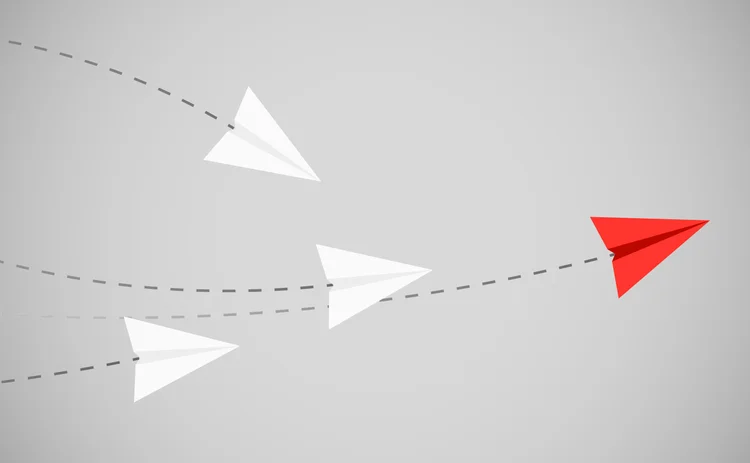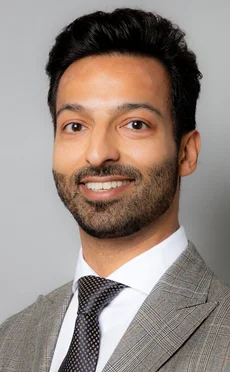
This article was paid for by a contributing third party.More Information.

Structured products – The ART of risk transfer

Exploring the risk thrown up by autocallables has created a new family of structured products, offering diversification to investors while allowing their manufacturers room to extend their portfolios, writes Manvir Nijhar, co-head of equities and equity derivatives, UK, at Societe Generale

The prevalence and mass demand for autocallable structured products has created something of a dilemma for the banks that have manufactured them. These investments suit a market in which interest rates have remained low for so long that investors have never been more willing to take on increased risk.
Success has bred more success – the market is now flooded with autocallables, which make up a large majority of the structured products sold to retail investors, especially in Asia, with no suggestion that the conditions stoking the demand will go away.
So far, so good, but there is a limit. Banks can create these investments but are, at the same time, booking a lot of product. Since the introduction of Basel III regulation and stricter risk guidelines in general, banks are required to hold more capital and hedge such trades more frequently. The more the market moves, the more the banks that create these products, such as Societe Generale, see their risks increase. Banks need to cover this risk more actively, giving them a negative gamma effect: currently, as the market moves, they are forced to hedge various derivatives parameters, locking in losses to cover.
The more the market moves and the more banks maintain these positions, the greater the erosion of potential profit from these trades. Without these pressures, banks could make money but they sit, fingers crossed, hoping the market does not move too much. In contrast, client investors holding this risk are not constrained by the same regulations and have the opportunity to extract the full value from such trades.
Responding to a tougher regulatory environment, which has started to restrict how banks use their capital, banks such as Societe Generale are moving risk off their books to make room for issuing more. The name for this practice, which has gained in popularity over the last four years, is risk transfer or, more specifically, alternative risk transfer (ART).
Creating the autocallables is easy; ART is the hard part.
Four years ago, the risk transfer universe was limited to a small subset of the hedge fund community. Some old convertible bond specialists were attracted to it because they understood the volatility component and became more relative-value volatility players. But most people ignored it.
The wonderful effects of QE
In tandem with the rapid rise of autocallables, the catalyst for risk transfer products came in April and May 2015, when the introduction of quantitative easing (QE) by the European Central Bank was followed by some weird and wonderful effects. In this case, highly correlated equity and bond sell-offs meant risk-parity portfolios suffered large drawdowns from portfolios that were supposedly diversified. Typically held by asset managers and institutions, low-volatility portfolios that included equities – with bonds as a diversifier – confounded expectations as both asset classes moved in the same direction.
The discussions that followed with smaller asset managers, discretionary fund managers, private wealth owners, and other banks and pension funds were based around the need for a more reliable diversifier to equities and included mention of a risk transfer suite, of which dispersion proved to have a good entry point. But while the numbers worked, the pitch did not – it was too complicated.
The more simple and intuitive replacement pitch demonstrated to investors the concept of dispersion, how it can act as a diversifier, and the ways in which it could fit into an investment portfolio. The target was institutional clients – mainly asset managers, discretionary fund managers and self-managed pension funds – that were offered fully funded instruments. This feature ensured access to these risk transfer products without the need for International Swaps and Derivatives Association agreements or documentation, as well as a collateralised offer allowing investors to remove bank credit risk.
Over the next two years, the new premia dispersion was a success, opening conversations with investors around a risk transfer family that existed entirely because of structural imbalances in the market arising from the hedging of structured products. Unsurprisingly, those that know this market best are the ones that create and then hedge these products. Simply put, banks such as Societe Generale have the structured products inventory to create these risk transfer products with clear explanations and knowledge of the flows.
The more sophisticated proposition was not for individual products but a family of premia unavailable through the systematic or quantitative strategies investors buy ‘off the shelf’ from banks or asset managers. Instead, the premia were presented as relative-value strategies. The only restriction was that buyers must trade specific transactions with those that own the inventory.
The next step was constructing portfolios of risk transfer trades to create a diversified portfolio, collectively offering unique risk premia, uncorrelated or even negatively correlated to risk assets. As with risk premia, what was being created was similar to cross-asset risk premia baskets that were weighted in a certain way. The pitch is similar to that for alternative risk premia and based around certain characteristics:
- The mark-to-market behaviour of each risk transfer trade
- The behaviour of these trades in a realised profit and loss (P&L)
- The times when these trades make more money and when they make less
- The regime
- The strategies that are complementary
- The respective volatility of the strategy
- The ways to build a portfolio of trades to optimise Sharpe ratios, delivering maximum return for the lowest possible volume.
The hedger
The trades fit into the risk transfer bucket and are made possible by the structural imbalances that follow the creation of structured products. Banks carry out the hedging so, as a simple example, if they are buying a lot of volatility from retail investors in certain products, they need to sell some volatility against this as a hedge.
If they can sell that in a packaged format to a new investor buying risk transfer products and spreading it against another risk transfer, they are passing along the risk, turning it into relative-value investment products. If there is one risk you may not want to hold outright, you can spread its relative value to another risk being held: you are long and short two things that are relatively correlated, so your net risk is smaller. Investors could lose here, but that loss would be mitigated by what they could make, so they are not simply betting one way on just a single exposure. It is more stable.
For the bank, the sale of structured products to retail investors makes for second- and third-order derivatives risks – volatility, correlation, skew, convexity, volatility of volatility and so forth. At Societe Generale, we look for smart solutions and ways for investors to be ‘risk-off’ wherever possible, while generating carry. For example, if we are looking to buy skew from investors, we will look for a smart and structurally cheap way for them to buy volatility against this. Or if we are selling correlation on a basket of assets, we would explore methods for investors to own some convexity against this. There are premia to be extracted this way: setting up relative-value trades, being long one parameter that is structurally depressed, while being short another that is structurally rich.
Over the past 10 years, assuming clients traded at the current levels, the P&L has been asymmetric: the timing of such trades is appealing due to these entry points. Societe Generale has invested a lot of time in understanding the complementary nature of the various products within this family. Clients who have agreed and set up a portfolio of such complementary strategies are doing so to optimise their expected return for the lowest possible volatility, in a manner that is robust irrespective of the economic regime. This is the primary objective of setting up such a portfolio and taking a risk premia approach.
Robust strategy
The latest boost for these ART trades came in 2018 when more liquid alternative risk premia portfolios suffered a poor year, defying their promise of non-correlation and losing some of their most ardent advocates, most notably a handful of pioneering investors from northern Europe. Those invested in ART trades, however, were relatively unaffected and, on the whole, showed a good performance, with the rationale for why these trades moved a certain way remaining intact.
Another factor in favour of risk transfer comes in the guise of the many geopolitical risks that make it so difficult to invest with any degree of certainty. If you had been long equities early this year, you will have enjoyed moderate success. The same is true if you have been long duration recently but, generally, it is hard to have conviction.
Many investors have been caught out this year: those who wanted to be underweight duration and equities, as well as the many who started the year saying volatility was a definite ‘outright own’ here. Meanwhile, the family of ‘risk-off’ risk transfer products has performed consistently, doing what it said it would in terms of mark-to-market behaviour and realised P&L. When products made little money in some periods, investors did not lose. They just made less money than the year before.
The next step is to introduce investors that have followed one form of strategy to a portfolio of complementary types. If there are positive expected returns from holding a trade to expiry, the lowest volatility you can have going through the lifecycle, the better. Societe Generale has also been spending a lot of time on the road, educating global allocators that have neither looked at nor considered ART transfer, but have invested in hedge funds. This has led to some natural introductions between hedge funds looking to raise seed or additional capital for risk transfer-related funds, and allocators interested in what we have to say on the topic.
Discover further insights on alternative risk transfer at the Societe Generale and Risk Derivatives Conference on October 4, 2019.
Sponsored content
Copyright Infopro Digital Limited. All rights reserved.
As outlined in our terms and conditions, https://www.infopro-digital.com/terms-and-conditions/subscriptions/ (point 2.4), printing is limited to a single copy.
If you would like to purchase additional rights please email info@risk.net
Copyright Infopro Digital Limited. All rights reserved.
You may share this content using our article tools. As outlined in our terms and conditions, https://www.infopro-digital.com/terms-and-conditions/subscriptions/ (clause 2.4), an Authorised User may only make one copy of the materials for their own personal use. You must also comply with the restrictions in clause 2.5.
If you would like to purchase additional rights please email info@risk.net